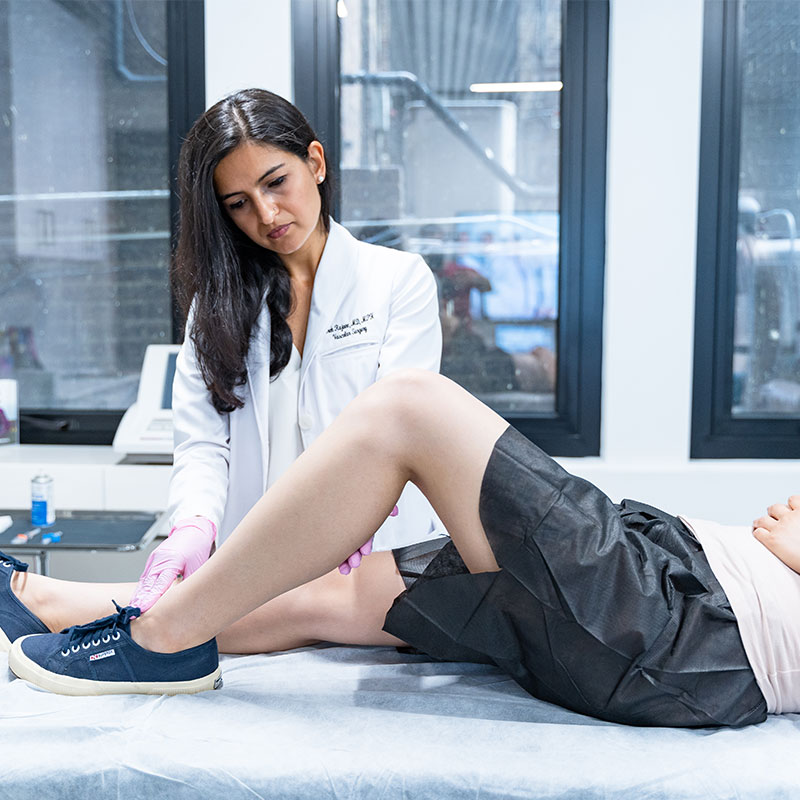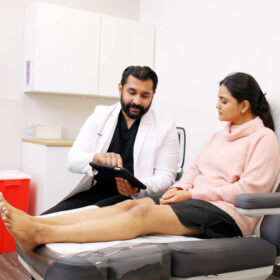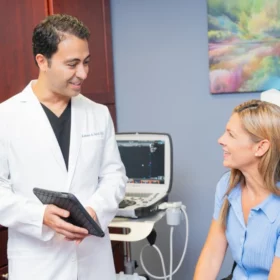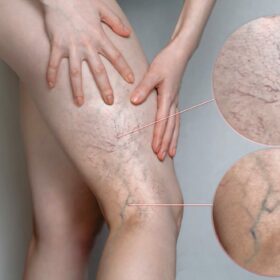At Vein Treatment Clinic, we understand that concerns about varicose veins are common, especially given their prevalence and potential impact on one’s quality of life. With the growing acceptance and use of marijuana for medicinal and recreational purposes, questions often arise about its effects on vascular health. One such query that frequently emerges is whether smoking marijuana contributes to the development of varicose veins.
The Link Between Marijuana and Varicose Veins
Smoking, whether marijuana or tobacco, can have detrimental effects on your venous system, potentially leading to a range of cardiovascular problems, including varicose veins. In this section, we explore how smoking impacts your veins.
Smoking introduces harmful chemicals into your bloodstream, which can damage the walls of your veins over time. This damage can make the veins more rigid and less flexible, impeding the smooth flow of blood through your cardiovascular system. As a result, blood flow to the arms and legs may become insufficient, leading to peripheral vascular disease (PVD). In PVD, the reduced blood supply to the extremities can contribute to varicose veins.
Varicose veins are enlarged, twisted veins that typically appear in the legs due to underlying venous insufficiency. Smoking can contribute to the development or worsening of varicose veins by damaging the veins and impairing blood flow. When veins are weakened, and blood flow is compromised, blood may pool in the legs’ veins, causing them to bulge and twist under the added strain. This can lead to the characteristic appearance of varicose veins and may exacerbate symptoms such as pain, swelling, and discomfort.
Other Risk Factors for Varicose Veins
1. Genetics
A significant risk factor for varicose veins is a family history of the condition. If one or both of your parents have varicose veins, you are more likely to develop them yourself. This increased risk is thought to be due to inherited traits that affect the strength and integrity of vein walls and valves. While genetic predisposition cannot be changed, being aware of your family history can help you take proactive steps to minimize other risk factors and manage the condition.
2. Age
Advancing age is another risk factor for varicose veins. As we grow older, the wear and tear on our veins accumulate, leading to changes in their structure and function. Over time, the valves within the veins may weaken, allowing blood to pool and veins to become enlarged and twisted. While varicose veins can occur at any age, they are more commonly observed in older adults. Aging also tends to coincide with other risk factors, such as decreased mobility and increased prevalence of other health conditions, further contributing to the risk of varicose veins.
3. Obesity
Obesity is a well-established risk factor for varicose veins and other venous conditions. Excess weight places added pressure on the veins, particularly those in the lower extremities, where blood must flow against gravity to return to the heart. This increased pressure can lead to vein wall damage and valve dysfunction, increasing the likelihood of varicose vein development. Furthermore, obesity is often associated with a sedentary lifestyle and poor dietary habits, which can exacerbate venous issues and complicate treatment outcomes.
4. Prolonged Standing or Sitting
Occupations or activities that involve prolonged periods of standing or sitting can significantly increase the risk of varicose veins. When you stand for long periods, gravity causes blood to pool in the lower extremities, putting strain on the veins and weakening their valves. Similarly, sitting for extended periods can impede blood flow and contribute to venous congestion.
People who work in professions that require prolonged standing, such as healthcare workers, teachers, and retail employees, are particularly susceptible to varicose veins. Taking regular breaks to move around, practicing leg exercises, and wearing compression stockings can help alleviate venous pressure and reduce the risk of varicose veins in these individuals.
5. Gender
Gender also plays a role in the development of varicose veins, with women being more predisposed to the condition than men. This increased risk in women is attributed to hormonal fluctuations, particularly during puberty, pregnancy, and menopause. Additionally, female hormones like estrogen and progesterone can weaken vein walls and valves, making women more susceptible to vein issues. Pregnancy, in particular, places significant strain on the venous system due to increased blood volume and hormonal changes.
6. Previous Vein Conditions or Trauma
Individuals who have previously experienced venous conditions or trauma are at higher risk of developing varicose veins. Conditions such as deep vein thrombosis (DVT) or venous insufficiency can compromise vein function and increase the likelihood of developing varicose veins. Similarly, injuries or trauma to the veins, such as fractures or surgeries involving the veins, can disrupt blood flow and contribute to vein damage.
7. Sedentary Lifestyle
A sedentary lifestyle characterized by a lack of physical activity can significantly elevate the risk of varicose veins. Regular exercise promotes healthy blood circulation, strengthens the muscles that support vein function, and helps maintain a healthy body weight—all of which are crucial for optimal vein health. Conversely, prolonged periods of inactivity can lead to poor circulation and blood pooling in the lower extremities, contributing to the development of varicose veins.
Lifestyle Tips to Mitigate the Risk of Varicose Veins
1. Regular Exercise
Regular exercise is one of the most effective ways to promote healthy blood circulation and strengthen the muscles that support vein function. Engaging in activities that elevate the heart rate, such as walking, jogging, cycling, or swimming, helps pump blood efficiently through the veins and prevents blood from pooling in the lower extremities. Additionally, targeted exercises that focus on the calf muscles, such as calf raises and ankle flexion exercises, can improve venous return and reduce the risk of varicose veins.
2. Maintain a Healthy Weight
Maintaining a healthy weight is crucial for reducing the strain on your veins and minimizing the risk of varicose veins. Excess weight puts added pressure on the veins, particularly those in the legs, making them more susceptible to damage. By adopting a balanced diet rich in fruits, vegetables, lean proteins, and whole grains and incorporating regular physical activity into your routine, you can achieve and maintain a healthy weight and support vein health.
3. Elevate Your Legs
Elevating your legs is a simple yet effective way to relieve venous pressure and reduce swelling in the lower extremities. When you elevate your legs above the level of your heart, gravity helps promote venous return, allowing blood to flow more easily back to the heart. This can help alleviate symptoms of venous insufficiency, such as swelling, discomfort, and fatigue. Elevate your legs for at least 15-20 minutes several times a day.
4. Avoid Prolonged Standing or Sitting
Avoiding prolonged periods of standing or sitting can help improve blood circulation and reduce the risk of varicose veins. If your job or daily activities require you to stand or sit for long periods, take frequent breaks to move around, stretch your legs, and change positions. Additionally, consider using a footrest or adjustable desk to promote better posture and circulation.
5. Wear Compression Stockings
Compression stockings are specially designed garments that apply gentle pressure to the legs, promoting venous return and preventing blood from pooling in the veins. These stockings can help alleviate symptoms of varicose veins and reduce the risk of venous insufficiency. Compression stockings come in various styles and compression levels, so it’s essential to consult our vein doctors to determine the most appropriate type for your needs.
6. Stay Hydrated
Proper hydration is essential for maintaining optimal blood circulation and supporting vein health. Drinking an adequate amount of water throughout the day helps prevent dehydration, which can lead to thickened blood and decreased blood flow. Aim to drink at least eight glasses of water per day, and limit your intake of caffeinated and alcoholic beverages. By staying hydrated, you can support healthy blood circulation and reduce the risk of varicose veins.
Schedule Your Consultation
At Vein Treatment Clinic, we emphasize the importance of maintaining a healthy lifestyle and addressing risk factors to promote optimal vein health. If you have concerns about varicose veins or would like to explore treatment options, we encourage you to schedule a consultation with one of our board-certified vein doctors. We provide expert guidance and personalized care to help you make lifestyle changes to achieve healthier veins and address existing issues.












